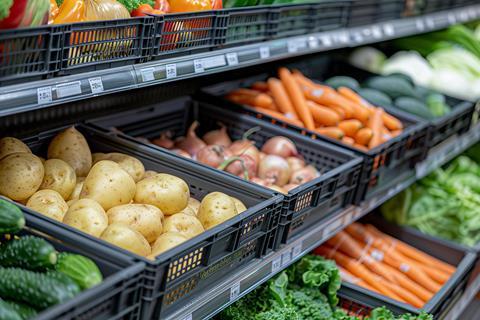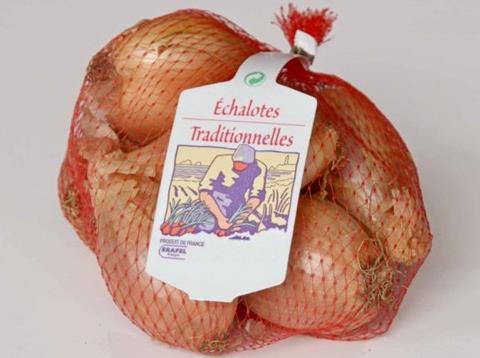The potential impact of Donald Trump’s tariff wars remains highly uncertain, but for European vegetable exporters targeting the US market, much may depend on the availability of alternative sources

Export volumes of European vegetables to the US may not be massive, but the imposition of a 20-25 per cent tariff on EU imports would certainly create challenges for those targeting the US market.
Many European vegetable exporters have been increasing their focus on the US market in recent years, and this measure risks hurting their competitiveness, according to Steve Alaerts of Antwerp, Belgium-based logistics service provider Foodcareplus.
Alaerts foresees various possible eventualities, not all of them negative, but argues fervently against such obstacles to fair trade.
“At Foodcareplus, we strongly support fair and thriving international trade, and we align with the International Fresh Produce Association’s (IFPA) position, which states that fair trade expands markets, drives prosperity and ensures access to fresh, nutritious foods worldwide,” he said.
“While tariffs can sometimes address trade imbalances, their broad application disrupts supply chains, raises costs for consumers and places unnecessary strain on growers and producers,” he explained. “Instead, IFPA advocates for swift and meaningful regulatory relief and reform as the most effective way to support agriculture and strengthen food security.”
EU vegetable exports falling
Research from ABN Amro predicted that Dutch food exports to the US — worth around €2.3bn in 2023 — would be more than halved were a 25 per cent import tariff fully passed on to customers, according to Financieele Dagblad.
Only Spain sends more vegetables from the EU to the US, but Dutch vegetables have already seen a decline to the market in recent years. Exports stood at 8,850 tonnes in 2024, according to statistics from Eurostat, nearly half the volume sent to the US in 2019.
France was in third place in 2024, sending 2,412 tonnes of vegetables to the US, including shallots from the region of Brittany.

According to Pierre Gélébart of marketer Prince de Bretagne, French shallots have already faced a tax of 100 per cent that has caused export volumes to plummet over the years.
“Shallots produced on the West Coast of the US are sent by truck to the East Coast,” he explained, “but it’s actually cheaper to ship French shallots by container across the Atlantic.”
A silver lining for fourth-placed Belgium is that its vegetable exports to the US remain limited, falling to just 739 tonnes last year, according to Nele Van Avermaet of VLAM, Flanders’ Agricultural Marketing Board.
“There are some exports of vegetables, but these have been declining year after year, mainly due to decreasing volumes of Belgian endives,” she told Fruitnet. “Additional tariffs might be the final blow to these already limited export volumes.”
However, there is good news for Belgian endives. Van Avermaet pointed to a Rabobank study on the importance of price elasticity in determining the impact of tariffs on a given product.
“If a product operates in a highly competitive price market, higher tariffs will have an impact, as buyers will simply look for the product from another supplier or within their domestic market,” she said. “However, if a product is price inelastic and the market does not react to price increases (Rabobank uses EU olive oil as an example), the impact of the tariffs will be less significant.”
Van Avermaet fears that many Belgian and European fruits and vegetables are fairly easily replaceable by alternative sources. Certain products, on the other hand, including Belgian endives and celeriac, are mainly produced in the affected regions of the EU, Canada, China and Mexico, she observed.
Impact on Mexico and Canada
Any tariffs on EU imports shouldn’t be analysed in isolation, of course, with those on the US’s neighbours likely to have multiple knock-on effects. Alaerts noted that preferential treatment of Canadian and Mexican products had formerly put European produce at a disadvantage on the US market.
“Previously, Mexico and Canada benefited from a 0 per cent tariff preference under USMCA, making them highly competitive against European produce,” he said. “If these new tariffs are implemented, they could significantly increase the landed cost of Mexican and Canadian products in the US, creating an opportunity for European exporters in certain segments.”
Donald Trump’s Presidential Memorandum calls for the development of a comprehensive plan to “restore fairness in US trade relationships”, and Alaerts says it is worth remembering that the EU generally applies much lower tariffs on imported fresh produce.
“Certainly nowhere near the 20-25 per cent range being discussed for the US market,” he told Fruitnet. “This is why we believe that non-tariff barriers, such as phytosanitary restrictions and regulatory compliance, may become even more relevant as trade frictions develop. The best example is that European apples and pears are still not allowed into the US, while the US is a major exporter here.”
The main effect so far has been a lack of certainty. Having just paused duties on automakers in Mexico and Canada, President Trump reportedly mentioned that he was considering some agricultural exemptions from tariffs on Mexico and Canada, according to Bloomberg News.
“While uncertainty remains, European exporters are closely monitoring these developments,” said Alaerts, “as the US remains an attractive growth market for high-quality European fresh produce.”



